The Millennial Possibility Mindset and Riding the Next Wave of Human Evolution Part 1

 Debra Pearce-McCall, PhD, is a Psychologist, Consultant, and “Mind Coach”, who brings the latest understandings of our relating minds and brains into everything she does. She works with leaders, healthcare professionals, coaches, educators, and other folks who want to bring mindful, compassionate presence and applied neuroscience into their lives and their mentoring work with people. Debra loves translating wisdom from the science of being human into everyday experiences and action plans for positive and sustainable change. She’s been active in the cutting-edge field of interpersonal neurobiology for over a decade, and integrates its meta-framework with state of the art tools, including mind-body methods that help strengthen the nervous system and brain, and powerful skill builders, like Conversational Intelligence®. Below, she shares her insight and experience from her pursuit of interpersonal neurobiology and how it can explain the Millennial Possibility Mindset, which you can read more about in detail in the article she co-authored with Judith Glaser: “Riding the Next Wave of Human Evolution” and be sure to check out her website! Be sure to check out the interview with co-author Judith Glaser for more on the power of the Millennial Possibility Mindset!
Debra Pearce-McCall, PhD, is a Psychologist, Consultant, and “Mind Coach”, who brings the latest understandings of our relating minds and brains into everything she does. She works with leaders, healthcare professionals, coaches, educators, and other folks who want to bring mindful, compassionate presence and applied neuroscience into their lives and their mentoring work with people. Debra loves translating wisdom from the science of being human into everyday experiences and action plans for positive and sustainable change. She’s been active in the cutting-edge field of interpersonal neurobiology for over a decade, and integrates its meta-framework with state of the art tools, including mind-body methods that help strengthen the nervous system and brain, and powerful skill builders, like Conversational Intelligence®. Below, she shares her insight and experience from her pursuit of interpersonal neurobiology and how it can explain the Millennial Possibility Mindset, which you can read more about in detail in the article she co-authored with Judith Glaser: “Riding the Next Wave of Human Evolution” and be sure to check out her website! Be sure to check out the interview with co-author Judith Glaser for more on the power of the Millennial Possibility Mindset!
Thank you Dr. Pearce-McCall for taking time to answer some questions for us today! What is the field of interpersonal neurobiology and why did you choose to pursue it?
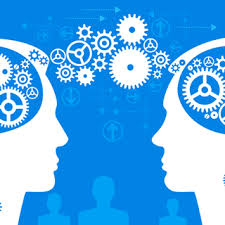 Interpersonal neurobiology (IPNB) is a field and framework based on consilient or in-common findings from over a dozen scientific disciplines including neuroscience and psychology. I call it “Systems 3.0” because I’ve been a student of the human mind, relationships, and a complex systems perspective for decades, and now with IPNB, we have a way to describe the three weaving, living, interconnected systems of our brains, our ecology – especially our relationships, and our minds. Viewing the whole tapestry of experience like this gives us new understandings of our minds and working definitions of health and well-being, based on the science of complex systems. These principles of well-being seem to apply at all levels and in all types of human systems – I professionally apply IPNB with great results to leadership and executive coaching; ethics; therapy and training; education; consulting; and more. I think of it as simply developing our minds and mind skills, using a holistic and flexible approach that includes body/brain, communication, self-care, and more. I’m a mind coach! And I mostly work with folks who themselves are mentors of minds.
Interpersonal neurobiology (IPNB) is a field and framework based on consilient or in-common findings from over a dozen scientific disciplines including neuroscience and psychology. I call it “Systems 3.0” because I’ve been a student of the human mind, relationships, and a complex systems perspective for decades, and now with IPNB, we have a way to describe the three weaving, living, interconnected systems of our brains, our ecology – especially our relationships, and our minds. Viewing the whole tapestry of experience like this gives us new understandings of our minds and working definitions of health and well-being, based on the science of complex systems. These principles of well-being seem to apply at all levels and in all types of human systems – I professionally apply IPNB with great results to leadership and executive coaching; ethics; therapy and training; education; consulting; and more. I think of it as simply developing our minds and mind skills, using a holistic and flexible approach that includes body/brain, communication, self-care, and more. I’m a mind coach! And I mostly work with folks who themselves are mentors of minds.
Intriguingly, almost every person I’ve worked with experiences changes in their professional and personal life – becoming more mindful, more compassionate, more relational, more communicative, more authentic, more content. From what I see in clients, classes, workshops, and the membership of our IPNB community, at mindGAINS.org, IPNB is a meta-framework folks in a number of professions find incredibly helpful to use in conjunction with their other models and change theories, whether they are coaches, leaders, clinicians, lawyers, teachers, etc., as it illuminates and strengthens the impactful ingredients of so many application models. And personally, as parents or partners, and as a way of becoming more generous and generative with ourselves and others, it can be transformative.
On an even more personal level, when we consider being ‘well humans’ in this multi-systems way, lifelong aspirations that hold deep meaning for me – like increasing our compassion and respect for ourselves and others; like humanity embracing and embodying that what is good for people and the planet matters more than (or at least as much as!) profit and things – these values are supported by the science of what creates and maintains healthy minds, brains, and human systems (and probably sustainable ecosystems).
You consult with leaders of many different fields to work to create customized change methods for them based on your wide-ranging and integrated knowledge. What are some of the ideas you challenge your clients with?
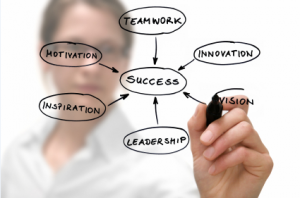 Oh, there are so many, though I think of it more as invitation than challenge! And some of my ideas emerge from our conversations and the particular circumstances they are addressing, so they will be unique to that client. Let me summarize though, two of my key concepts for leaders that arise from applying relational neuroscience and mindful awareness: 1) Develop skills to reflect on and know your own mind because – your mind is not what you think. With the primary social wiring of our nervous systems, we are constantly ‘relating’ with others; and our minds emerge, in part, from those resonant connections, and in part from all kinds of physiological activity we are not ‘aware’ of, all merging into a mix of emotion, sensation, expectation, perception, memory, and thought that we subjectively experience as our mind. 2) Any leader of people is actually mentoring and leading minds, so to be one’s best as a leader, you need to have ways to really understand ‘minds’ that are pragmatic and translatable into what you do every day, with direct reports or folks you work with, in meetings, with yourself
Oh, there are so many, though I think of it more as invitation than challenge! And some of my ideas emerge from our conversations and the particular circumstances they are addressing, so they will be unique to that client. Let me summarize though, two of my key concepts for leaders that arise from applying relational neuroscience and mindful awareness: 1) Develop skills to reflect on and know your own mind because – your mind is not what you think. With the primary social wiring of our nervous systems, we are constantly ‘relating’ with others; and our minds emerge, in part, from those resonant connections, and in part from all kinds of physiological activity we are not ‘aware’ of, all merging into a mix of emotion, sensation, expectation, perception, memory, and thought that we subjectively experience as our mind. 2) Any leader of people is actually mentoring and leading minds, so to be one’s best as a leader, you need to have ways to really understand ‘minds’ that are pragmatic and translatable into what you do every day, with direct reports or folks you work with, in meetings, with yourself
I help leaders develop Trinocular Vision™, our abilities to co-consider mind/brain/relating and their integrative, emergent, systemic nature, so we are working with all three levels of our human experiencing, especially in our self-regulation and our communication. This can sound complicated at first, but in practice it becomes easier and often transformative. Experiencing ourselves, others, and relationships in this way allows leaders (and others) to develop what I call Prosilient Minds™. We all know the concept of resilience – now think about events, important relationships, challenges, or transitions in your life and how they are really our opportunities for learning, growing, expanding – in essence, we hopefully don’t return to some baseline, we reach a new place, and hopefully it’s a more integrated place of increased well-being – we are authentically stronger, wiser, kinder, more engaged and positively impactful. So, these challenges we all face, at work and personally, are always giving us the possibilities to become prosilient – to leap forward with the positive potential in the flow of change, not just recover with resilience. Kind of like catching the wave! We all know the old sayings it’s not what happens to you, it’s how you deal with it, or crisis is danger and opportunity – developing prosilient minds gives us the attitudes and tools to harness the power of neuroplasticity and how we relate to others, so we can respond to professional and personal life events and challenges in ways that support well-being and progress.
 Several years back, I wrote an article about my work applying IPNB to leadership, with Daniel J. Siegel, one of the founders of the field of IPNB. In our article, Mindsight at Work: An interpersonal neurobiology lens on leadership, we summarize what most of my clients are doing: “Ethical, exemplary leaders are responsible for developing their own minds in ways that help them regulate the flow of information and energy in integrative patterns, in their co-workers or group members and their organizations, as well as in themselves.” Just think about it – those patterns are happening in our brains and nervous systems, in our relationships and organizations, and in our minds. With Trinocular Vision, leaders develop skills to see and sense the patterns of integration and how to facilitate them, as a mentoring and prosilient mind in that organization or situation or relationship. (Note that in the fullness of our lives, we all have times being the facilitator or regulator or mentoring mind, and times as the one being ‘held’ or mentored; in addition, some of us have chosen professions where we are regularly embodying a mentoring mindset – those are most of my clients.)
Several years back, I wrote an article about my work applying IPNB to leadership, with Daniel J. Siegel, one of the founders of the field of IPNB. In our article, Mindsight at Work: An interpersonal neurobiology lens on leadership, we summarize what most of my clients are doing: “Ethical, exemplary leaders are responsible for developing their own minds in ways that help them regulate the flow of information and energy in integrative patterns, in their co-workers or group members and their organizations, as well as in themselves.” Just think about it – those patterns are happening in our brains and nervous systems, in our relationships and organizations, and in our minds. With Trinocular Vision, leaders develop skills to see and sense the patterns of integration and how to facilitate them, as a mentoring and prosilient mind in that organization or situation or relationship. (Note that in the fullness of our lives, we all have times being the facilitator or regulator or mentoring mind, and times as the one being ‘held’ or mentored; in addition, some of us have chosen professions where we are regularly embodying a mentoring mindset – those are most of my clients.)
 Layering on my applications of IPNB to leadership, I’m also certified in Conversational Intelligence®, which was created by Judith E. Glaser, and is based on a foundation that includes systems theory and neuroscience. I chose to be trained in this methodology, and continue to work with the CreatingWE Institute and consult with C-IQ, because it offers leaders, teams, and organizations many beautifully designed and scientifically sound tools and experiences that invite them to address what we can call ‘the space in-between’, where conversation and connection happen, and where we usually co-initiate the processes of innovation and change. It helps us guide our conversations toward trust and discovery, which shifts the ongoing relational culture of an organization in ways that show up in all kinds of metrics of success. Judith and I met years ago and have shared our passions for bringing systems thinking, neuroscience, and the art and science of human connection to leadership and more ever since. It’s a delight to be her colleague and friend, as we always spark each other’s minds – our thoughts about the Millennial Possibility Mindset emerged from conversations about our conversations with folks that age.
Layering on my applications of IPNB to leadership, I’m also certified in Conversational Intelligence®, which was created by Judith E. Glaser, and is based on a foundation that includes systems theory and neuroscience. I chose to be trained in this methodology, and continue to work with the CreatingWE Institute and consult with C-IQ, because it offers leaders, teams, and organizations many beautifully designed and scientifically sound tools and experiences that invite them to address what we can call ‘the space in-between’, where conversation and connection happen, and where we usually co-initiate the processes of innovation and change. It helps us guide our conversations toward trust and discovery, which shifts the ongoing relational culture of an organization in ways that show up in all kinds of metrics of success. Judith and I met years ago and have shared our passions for bringing systems thinking, neuroscience, and the art and science of human connection to leadership and more ever since. It’s a delight to be her colleague and friend, as we always spark each other’s minds – our thoughts about the Millennial Possibility Mindset emerged from conversations about our conversations with folks that age.
The Millennial Possibility Mindset is based on a new understanding of our social brains, namely the development of our minds and neural patterns as a response to lived experiences. What sort of developments can our minds make by adapting to the experiences we’ve had?
We’ve had an explosion in the research on neuroplasticity over the past decades – all the ways the brain can change, from the birth of new neurons to the strengthening of connections between neurons by building up the myelin sheath – which acts like insulation on wires, to speed up signaling. We now know we are born with much brain-building left to do, and that our brains continue to change through our lives. For all of human history, our species has depended on each other for survival, and our brains are really geared for that social, tribal reality. So, the social experiences we have growing up are particularly impactful. Quickly – think about what you most remember from elementary school – and for most of us, it’s other kids or teachers or something emotionally and socially meaningful – not any information we learned.
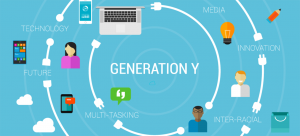 Some of what our social/developmental experiences can open or close our minds to has to do with how we view, engage in, utilize, and value other people and relationships, and this is reflected in patterns that get created in our nervous systems and operate mostly out of our awareness. Are we curious about others? Do we lead with trust or distrust? Are we comfortable with, intrigued by, or disturbed by differences between ourselves and others? I paraphrase Oliver Wendell Holmes and say that once our minds have been opened by a new experience, they cannot return to their original dimensions. The actual “stuff” of our brains may be generally most impacted by earlier experiences, and less pliable when we are older, but we are always responding to our environment and relationships, so our experiences are changing our minds and our brains – even more so when we remain open and don’t block new possibilities with rigid beliefs that filter out or discount any information that might challenge us to learn or change or grow.
Some of what our social/developmental experiences can open or close our minds to has to do with how we view, engage in, utilize, and value other people and relationships, and this is reflected in patterns that get created in our nervous systems and operate mostly out of our awareness. Are we curious about others? Do we lead with trust or distrust? Are we comfortable with, intrigued by, or disturbed by differences between ourselves and others? I paraphrase Oliver Wendell Holmes and say that once our minds have been opened by a new experience, they cannot return to their original dimensions. The actual “stuff” of our brains may be generally most impacted by earlier experiences, and less pliable when we are older, but we are always responding to our environment and relationships, so our experiences are changing our minds and our brains – even more so when we remain open and don’t block new possibilities with rigid beliefs that filter out or discount any information that might challenge us to learn or change or grow.
If you have had lived experiences, as many Millennials have – at least online – where you have found common ground with folks across superficial though long accepted ‘divides’ like skin color or gender identity or country or even belief systems – then you are more likely to accept a wider range of people as potentially at least a bit ‘like you’ in a wider panoply of shared humanity. We know all our brains do some automatic cataloging of others, in terms of how similar or not like us they seem, and then we behave accordingly; also, we know that certain forms of mindful compassion meditation can widen the circle of who we automatically experience as ‘like me’. In fact, researchers have identified the TPJ or Temporoparietal Junction as one brain area that shows increased activation with this form of meditation. This area, especially on the right side of the brain, seems correlated with processing the emotions in others or taking their perspective, which allows us to exercise our “mind-in-relating” skills like Conversational Intelligence®, or emotional intelligence, or mindsight, all tools for being prosilient. The more we automatically perceive others as enough like us that we feel enough safety to activate the parts of our nervous systems supportive of ‘social engagement’ rather than defense or withdrawal, the more we connect instead of reject. You can imagine how this kind of process can spiral expansively into further connection. (And of course, we have the opposite process where being closed off, having a set-point of mistrust, and other factors can create a tightening spiral of fear and the desire to disengage except from a small group of ‘like me’ people, or worse – to make the world safe by making it full of only people-like-me.)
 The qualities we named the Millennial Possibility Mindset are examples of how our minds develop through adapting to our experiences, in ways that can sculpt our brains. To directly answer your question, I will venture to guess that the ways our minds can do this, the kinds of developments we can make, are pretty vast and varied, and can move us toward integration and well-being at their best, or leave us rigidly stuck or chaotically reactive or permanently impaired. Research shows us, for example, the constraining, life-long neural impacts that can be the result of poverty or severe trauma. And the healing power of belonging, connection, and resourcing to potentially mitigate this, at least somewhat. We’ve been discussing the “larger circle of compassion” that might be part of the Millennial Possibility Mindset, and then, it’s not enough to simply feel everyone is potentially your tribe or at least a bit like you is – that we are all connected, because now their suffering also matters. If more and more people start experiencing most people as a bit ‘like me’, compassionate responses will mean we act more and more to address the suffering of those others, as we would for ourselves and those in our ‘tribe’, because it will hurt us not to do so.
The qualities we named the Millennial Possibility Mindset are examples of how our minds develop through adapting to our experiences, in ways that can sculpt our brains. To directly answer your question, I will venture to guess that the ways our minds can do this, the kinds of developments we can make, are pretty vast and varied, and can move us toward integration and well-being at their best, or leave us rigidly stuck or chaotically reactive or permanently impaired. Research shows us, for example, the constraining, life-long neural impacts that can be the result of poverty or severe trauma. And the healing power of belonging, connection, and resourcing to potentially mitigate this, at least somewhat. We’ve been discussing the “larger circle of compassion” that might be part of the Millennial Possibility Mindset, and then, it’s not enough to simply feel everyone is potentially your tribe or at least a bit like you is – that we are all connected, because now their suffering also matters. If more and more people start experiencing most people as a bit ‘like me’, compassionate responses will mean we act more and more to address the suffering of those others, as we would for ourselves and those in our ‘tribe’, because it will hurt us not to do so.
Why do you think our sense of self over the generations has shifted from needing to stand out to wanting to be a part of something larger than ourselves?
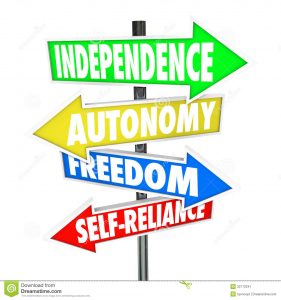 I think individual humans have always wanted some amount of autonomy and some amount of belonging, each of us in different mixes depending upon culture, upbringing, and our unique make-up, and that the available and preferred ‘balance’ ranges from one extreme to the other, and many points in-between. But in recent times we’ve seen Western and particularly American culture embracing an ethic of individualism in what seems a very out of balance way, with an emphasis on appearance and acquisitions, and all kinds of unhealthy escalations, to the point of narcissistic individualism almost seeming some type of norm. And yet, research shows us that our greatest happiness comes from having a sense of meaning and purpose, and from connection to others and to something larger than self. The natural attraction to community and connection, to valuing people and experience over things and just-self, has always been there, and I think we see it emerging strongly in many different ways now, because the imbalance has tipped so much.
I think individual humans have always wanted some amount of autonomy and some amount of belonging, each of us in different mixes depending upon culture, upbringing, and our unique make-up, and that the available and preferred ‘balance’ ranges from one extreme to the other, and many points in-between. But in recent times we’ve seen Western and particularly American culture embracing an ethic of individualism in what seems a very out of balance way, with an emphasis on appearance and acquisitions, and all kinds of unhealthy escalations, to the point of narcissistic individualism almost seeming some type of norm. And yet, research shows us that our greatest happiness comes from having a sense of meaning and purpose, and from connection to others and to something larger than self. The natural attraction to community and connection, to valuing people and experience over things and just-self, has always been there, and I think we see it emerging strongly in many different ways now, because the imbalance has tipped so much.
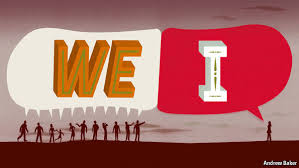 Actually, your question seems to hold a core human paradox – we are such clever creatures that we’ve developed a number of those. Am I me, or am I we? Of course, the answer is both. How do I balance me and we? Do I choose my momentary pleasure or a common good when they conflict? Right now, we have a variety of human cultures and we can see how they can hold very different solutions to the me/we conundrum, some very individualistic, some very communal. Growing up in these will create certain relational and communication patterns, as well as physiological ‘circuits’ on which the mind is more likely to ride. But the basic truth of our nervous systems is: we are always in non-visible connection when we share space, and we are all shaped by our “we’s” – from our most primary relationships (the ones we couldn’t survive without), to the ‘others’ we carry inside as memories, resources, and voices, to those we listen to or interact with in daily life as they support our beliefs or share our work, home, hobbies and daily activities. We are struggling to evolve to have a larger shared sense of all humans as We, a vision that is apparently repugnant to some, as it involves the acceptance of a huge diversity of me’s. Sustaining our species and our planet may depend on addressing this struggle successfully.
Actually, your question seems to hold a core human paradox – we are such clever creatures that we’ve developed a number of those. Am I me, or am I we? Of course, the answer is both. How do I balance me and we? Do I choose my momentary pleasure or a common good when they conflict? Right now, we have a variety of human cultures and we can see how they can hold very different solutions to the me/we conundrum, some very individualistic, some very communal. Growing up in these will create certain relational and communication patterns, as well as physiological ‘circuits’ on which the mind is more likely to ride. But the basic truth of our nervous systems is: we are always in non-visible connection when we share space, and we are all shaped by our “we’s” – from our most primary relationships (the ones we couldn’t survive without), to the ‘others’ we carry inside as memories, resources, and voices, to those we listen to or interact with in daily life as they support our beliefs or share our work, home, hobbies and daily activities. We are struggling to evolve to have a larger shared sense of all humans as We, a vision that is apparently repugnant to some, as it involves the acceptance of a huge diversity of me’s. Sustaining our species and our planet may depend on addressing this struggle successfully.
Our ability to approach uncertainty with confidence and optimism, part of the Millennial Possibility Mindset you described, has a foundation in our nervous system and defensive reactivity. How can our nervous system experience less of the fight or flight response and more of the social engagement response? Can we consciously do anything about that?
Yes, we can! The human dilemma is we can’t wait until we need that helpful foundation, we have to build it in advance – that’s developing prosilient mind skills. The great news is there are many ways to develop our minds and learn to facilitate positive neuroplasticity in our nervous systems, so I will simply offer a starting place and overview.
 The basic process of working with our nervous systems at the mind-brain interface has two phases, which I call “notice and nudge”. Start with your own self-noticing: Where in your body do you get early warning signals of that ‘activation’ response to uncertainty? What social situations, or parts of your own internal dialogue or story (like a belief, a memory, a worry) get those signals going? Now – think about being in an optimal social setting (or notice when you are in one) – feeling confident and optimistic, open to engage – what is that state like in your body, thoughts, story, etc.?
The basic process of working with our nervous systems at the mind-brain interface has two phases, which I call “notice and nudge”. Start with your own self-noticing: Where in your body do you get early warning signals of that ‘activation’ response to uncertainty? What social situations, or parts of your own internal dialogue or story (like a belief, a memory, a worry) get those signals going? Now – think about being in an optimal social setting (or notice when you are in one) – feeling confident and optimistic, open to engage – what is that state like in your body, thoughts, story, etc.?
Once you can notice and differentiate these mind-body states (activated and reactive vs socially engaged), then you can start to ‘nudge’ – that means taking any and all clues you notice about each state, and then developing what helps you bridge from one to the other – and practicing that. A nudge could simply be a few deep, slow breaths which helps most of us calm our nervous systems a bit, and/or it could be reviewing a previously created list of discovery questions or a mantra or visualization of how to get curious about uncertainty. Sometimes getting this process to happen requires us to do more extensive work prior, addressing deeper fears, healing from prior hurts, or developing more mind and relational skills.
Now that you have effective nudges developed, just create something that can quickly re-mind you about your new options in the moments you need them and instantly invite your desire to approach uncertainty – this needs to be a simple subtle gesture, reminder word, or image, for example. Since you have a new path and way of responding in mind (and nervous system), now awareness and repetition are your tools. It’s like knowing when it’s time to be standing at the ready, to see the train approaching, and being there to pull the switch and set the train down a different track – until that new track is the more familiar and easily traveled route, so the train just tends to go that way. Then, uncertainty becomes an invitation and an opportunity to engage.
Thanks Keri, I’ve really enjoyed your thoughtful questions. Folks can learn more or contact me at Prosilient Minds, find out more about IPNB at mindGAINS.org, and begin exploring C-IQ at The CreatingWE Institute.
Thank you so much Dr. Pearce-McCall for your time and valuable insight!

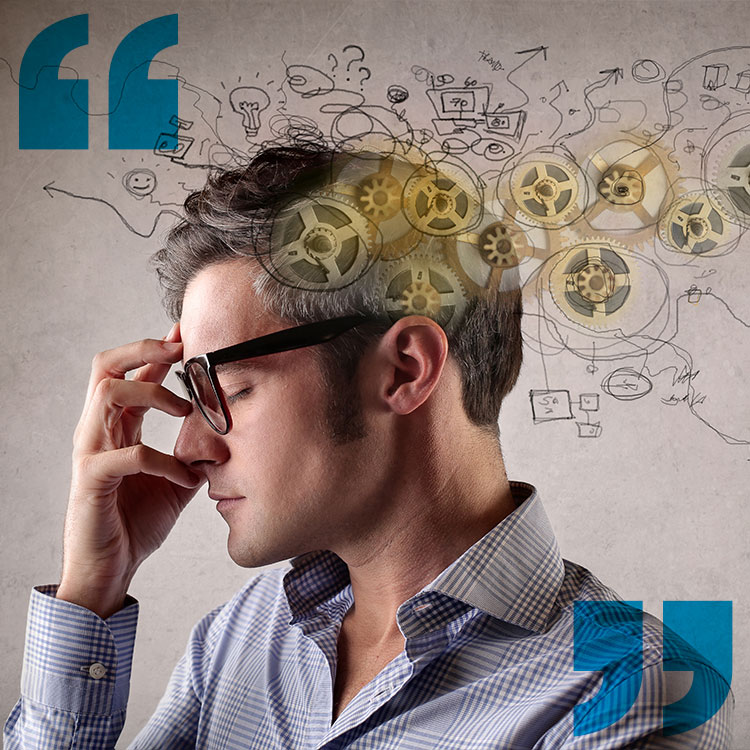



Responses